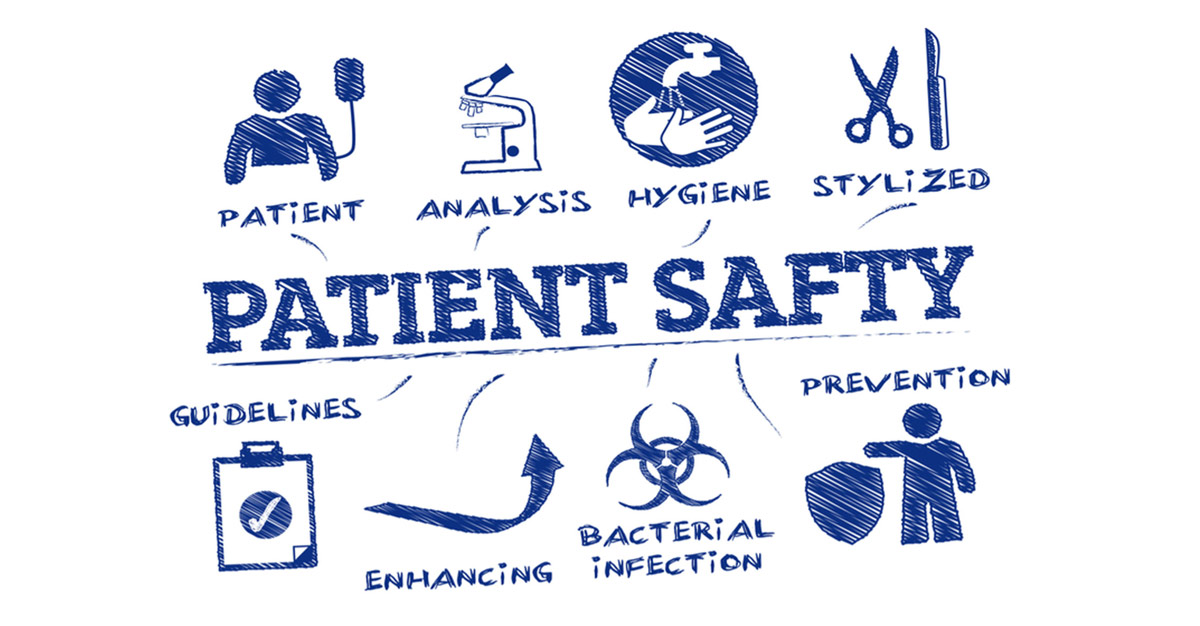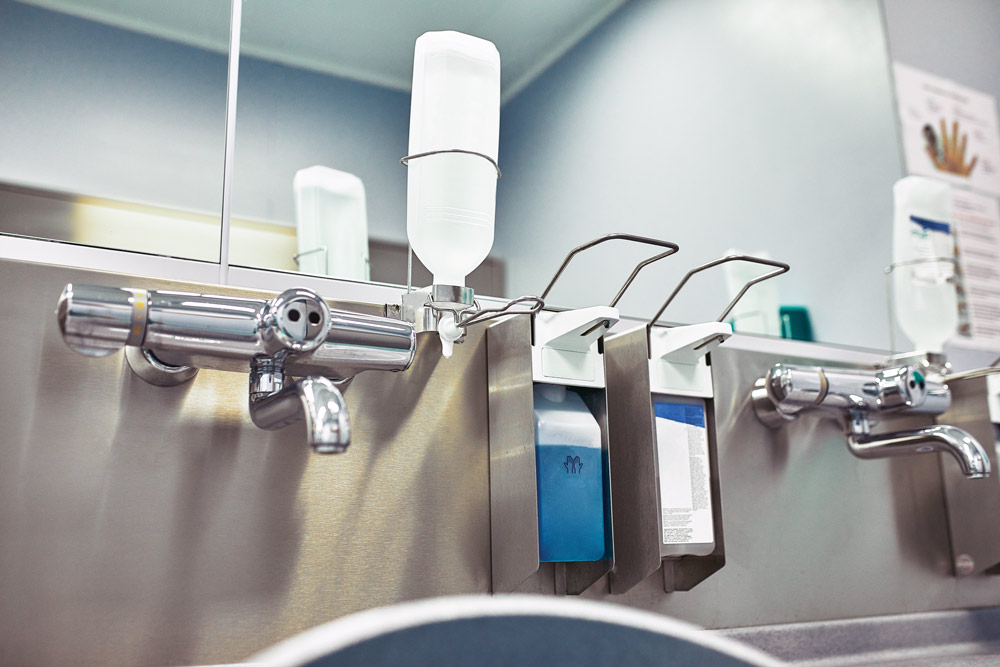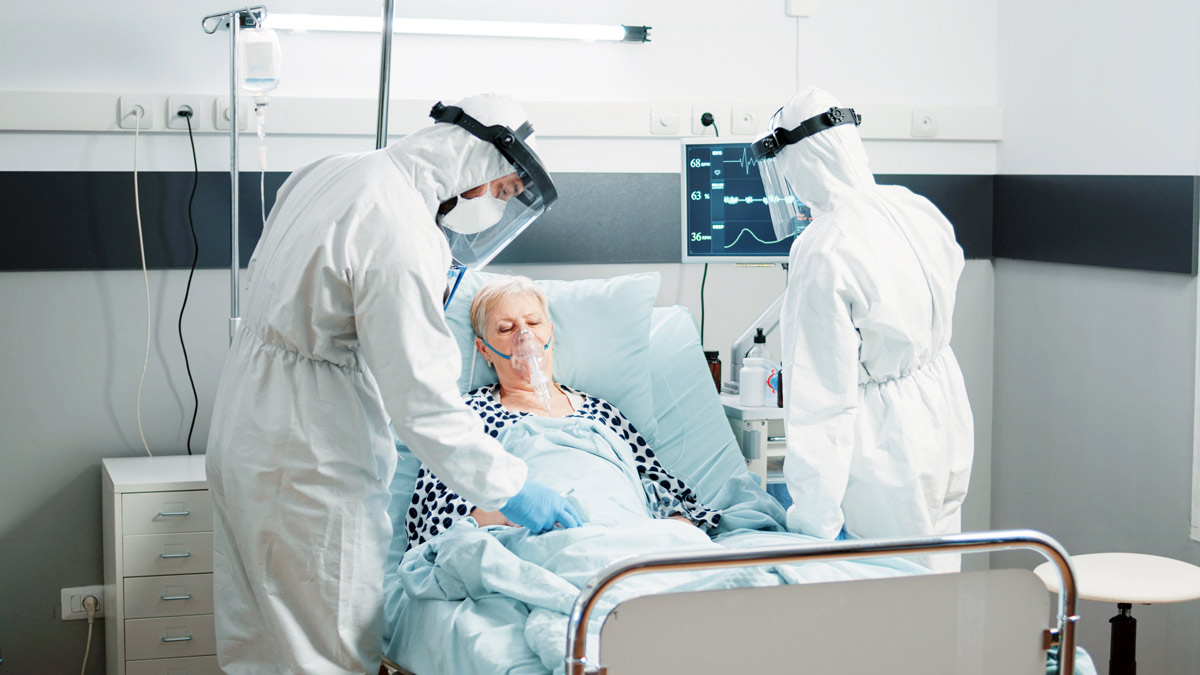Patient Safety… The cornerstone of top-notch healthcare

Patient safety in health facilities has evolved with the development of healthcare systems and has become essential to provide high-quality health services, in order to reduce the risks and prevent medical errors that patients may encounter while receiving people-centered effective, safe and integrated healthcare.
The implementation of patient safety principles and strategies requires clear policies based on healthcare providers’ experiences and the active patient participation.
The patient goes to the hospital to receive the necessary treatment for his condition, but this condition may worsen or he may contract an infection, if the medical staff does not take the necessary precautions to prevent any medical error that may occur. However, this has been under control recently, and the concerned authorities have worked to reduce medical errors and maintain patient safety.
Quality certificates have focused their attention in this field; today, hospitals adopt all the standards and policies that seek to provide the patient with top-notch healthcare services, which led to a significant decrease in medical errors and hospital-acquired infections.
Safety of patients during the provision of health services that are safe and of high quality is a prerequisite for strengthening healthcare systems and making progress towards effective universal health coverage (UHC) under Sustainable Development Goals to promote health and well-being for all.
Patient safety is the avoidance of unintended or unexpected harm to people during the provision of healthcare and moving towards further improvements at the level of safety and quality, so that the patient receives the necessary treatment in a safe environment.
In order to reach the desired goal, healthcare providers of all types should be supported and empowered on how to avoid medical errors by providing them with skills and mechanisms to improve safety.

Steps to maintain patient safety while receiving healthcare
Maintaining patient safety and avoiding medical errors that lead to life-threatening complications require taking several steps and following precautionary measures in every step they take, especially the nursing staff who works directly with patients.
Steps that should be taken:
- Preventing bloodstream infections during the insertion of intravenous catheters or blood sample collection. In order to achieve this, hands must be washed and sterilized before making any intervention and the skin must be cleaned with chlorhexidine solution.
- Reducing the risk of developing thrombophlebitis, an inflammatory process that causes a blood clot to form and block one or more veins, usually in the legs. Causes of thrombophlebitis include physical injury, surgery, or prolonged inactivity; therefore, the patient should wear compression stockings after every operation that requires bed rest.
- Educating patients about the use of blood-thinning medications, as the majority of patients take this type of medication after surgery and leave the hospital to prevent dangerous blood clots. If blood-thinning drugs are used incorrectly, it can lead to uncontrollable bleeding.
- Medical and nursing staff should not stay at work for long hours because the burnout makes them more likely to make mistakes.
- Designing the hospital in general and the patient rooms in particular in a way that brings comfort. Evidence shows that being in a comfortable environment positively reflects on the patient’s health in the first place and motivates healthcare providers to work better. It is recommended to establish decentralized nursing stations that allow easy access to patients.
- Reducing infection by providing single rooms, improving air filtration systems and providing multiple handwashing stations.
- The staff in the operating room must be fully aware of their responsibility regarding infection control policies and practices. Unusable and unused instruments and equipment should be disposed of from operating rooms.
- Reducing medication errors through automated pharmacies that reduce the burden on the pharmacist and give him enough time to talk with the patient and understand his condition. This also gives him enough time to smoothly complete other pharmacy work. Administering the right medication at the right time is one of the public safety foundations, as this contributes to improving the drug treatment service, promoting health and wellness, as well as preventing diseases. Hospitals follow specific policies and procedures based on scientific studies.
- Training the health facility staff to communicate effectively and respond quickly to patient requirements in order to enhance patient safety. Today, smart technologies are available to give the nurse the opportunity to follow up closely on the patient’s case without the need to move from one room to another. As soon as they notice any change in the patient’s vital signs, the nursing staff is alerted right away.
- Reducing hospital admissions as some cases can be followed up with medication and regular visits to the clinic and setting a schedule for that.
Advanced technology has enabled patient safety practices such as the use of simulators, coding tape, computerized provider order entry (CPOE), resource management, electronic health records and other practices and work strategies to avoid patient safety errors and improve healthcare operations. It is noteworthy that this does not eliminate direct human intervention, and these practices are only means to help the medical staff fully perform their tasks.
Clean healthy environment
Hygiene is the main step that hospitals and health facilities have been keen to implement in order to ensure the patient’s presence in a healthy and clean environment that reduces the risk of cross-contamination. Maintaining patient safety and keeping him healthy during his hospital stay requires creating a clean healthy environment and applying the latest mechanisms and strategies to prevent the spread of infection or its presence in the hospital environment.
The main patient safety steps include isolation, thorough handwashing, dealing with acquired infections and epidemics, disinfection and sterilization of surgical machines and devices, dealing with and disposal of laboratory samples and blood transfusions, infection control rules for preparing intravenous solutions, instructions for cleaning and disinfecting isolation rooms, operating rooms and intensive care rooms among others.

















